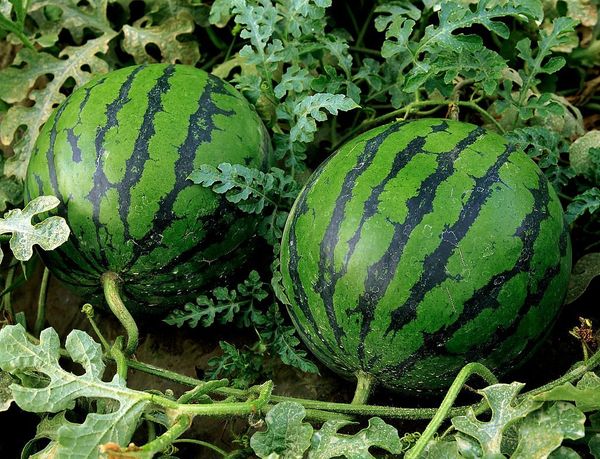Watermelon and melon are associated with the taste of summer, and each gardener wants to grow on his site the most delicious fruits. Long since the water-melon was used as curative diuretic medicine for cleaning of an organism. Gourds are thermophilic and grow in a warm climate, so for their cultivation and planting watermelons in the open field you need to possess special knowledge.
It is imperative to know in advance whether it is possible to plant melons if a cucumber, pepper, pumpkin or zucchini grows nearby.
Table of contents
Is it possible to plant watermelons and melons nearby?
Gourds belong to the pumpkin family. Cultures are very useful and contain a huge amount of vitamins. If you learn how to grow these plants, you can get a high yield of delicious fruits.
Melon is well suited for the "neighborhood" with watermelon. Plants tend to grow. It is not recommended to plant them together too close..
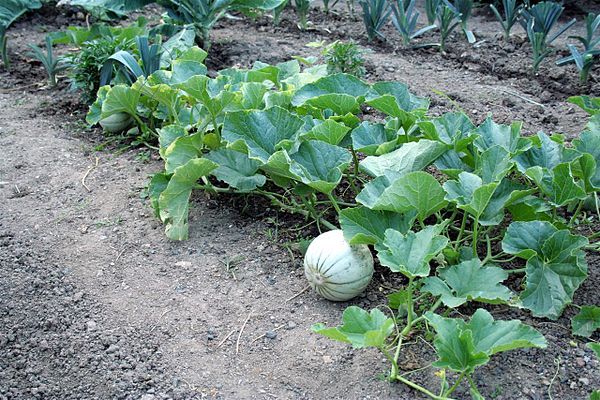
Proper seed sowing for seedlings at home
Seeds are planted on seedlings about 60 days before landing in open ground. So, in mid-March, the seeds must be purchased. You can buy them at any specialty store or ask those who have already managed to grow a quality crop of watermelons and melons.
From the seeds of last year's watermelon it is impossible to get a good harvest. The best seeds to plant– 5 years ago. It is important to understand that only early-maturing varieties suitable for our climate are ripening up to 70-85 days. It is better to give preference to hybrid varieties that are more adapted to adverse conditions.
When preparing seeds, make sure that they are not empty. For this, seeds are immersed in a container of water all that surfaced, you can safely throw. Watermelon seeds germinate more slowly than melon seeds. Therefore, watermelon seeds are recommended to boil over boiling water for better germination and then sow.
Preparing for planting and soaking
- Soak. Every single type of seed needs to be wrapped and soaked in a cloth and maintain in a moist environment before germination. You can soak in special napkins.
- If the seeds have already hatch, but there is no way to plant them in a timely manner, you can leave the seeds in the fridge.
Seeds sprouted at home are planted in separate small pots with a diameter of 10 cm, preferably peat. The soil should be a mixture of: humus, sod land 3: 1, add peat, sawdust, humus 3: 1: 0.5.
Planted in each pot 2 seeds each to the depth 5 cm. To moisten the earth with a spray.Cover the container with cling film and place in a warm place +25 degrees.
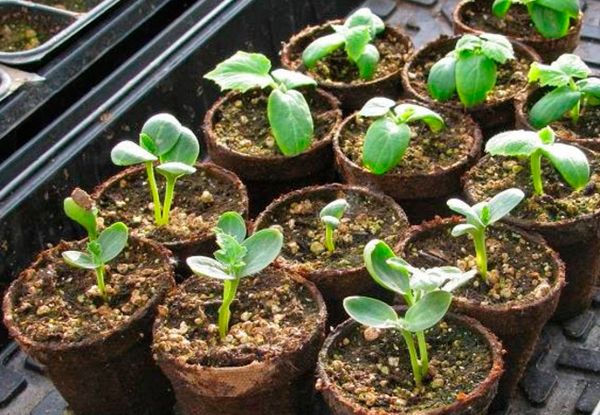
Recommendations for growing
- when the seeds germinate, transfer them to sunlight at a temperature +22 degrees. Remove the film;
- the best place for seedlings is the windowsill on the south side of the house;
- a week after sowing, feed the seedlings with mineral fertilizers, and a week later - with mullein infusion with superphosphate.
Planting in open ground
When planting in open ground need to focus on the climatic conditions, the selected cultivar, readiness of seedlings.
Soil selection
Before planting melons in open ground, you need to choose a place for planting. Exotic plants love sunny places where there is no shade and wind.
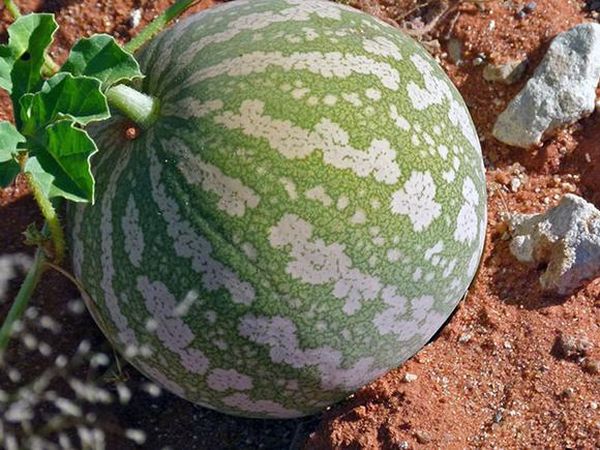
Melons and watermelons need rich soils, as well as those that withstand moisture well. The ideal option is sandy and sandy sand with a pH of 6-7 units.
Watermelon seedling preparation
When the seedlings appear 5-7 leavesShe is ready to transplant in open ground. Best time - the end of May. However, you need to focus on weather conditions so that at night the temperature of the air is +15 degrees.
A week before planting in open ground, seedlings need to be hardened to the daytime temperature of + 16 + 20 degrees.
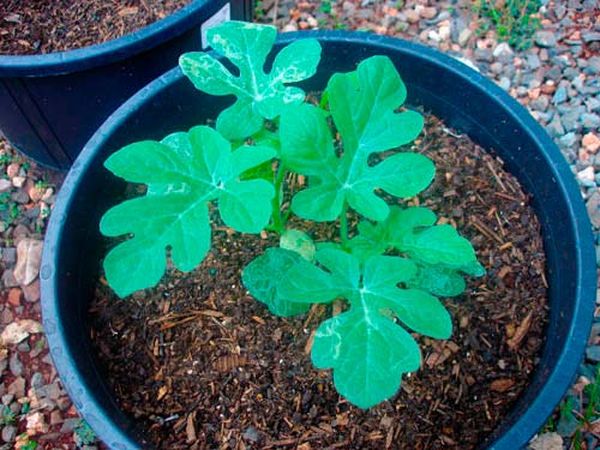
The scheme of planting in the open ground - the depth and distance
For planting in open ground, you must adhere to the following rules:
- In the garden beds should be made at a distance 0.5-0.7 meters apart according to a checkerboard pattern. Between rows leave gaps of 70cm.
- Seedlings are placed in the wells so that the surface remains only a few top leaves. The soil should be squeezed, and sanding around to protect the plant from rot.
- Crop after planting should be watered with summer or slightly warmed water.
- To protect a young plant from the scorching sun, you need to close the shoots for 2-3 days with moistened plastic or paper caps.
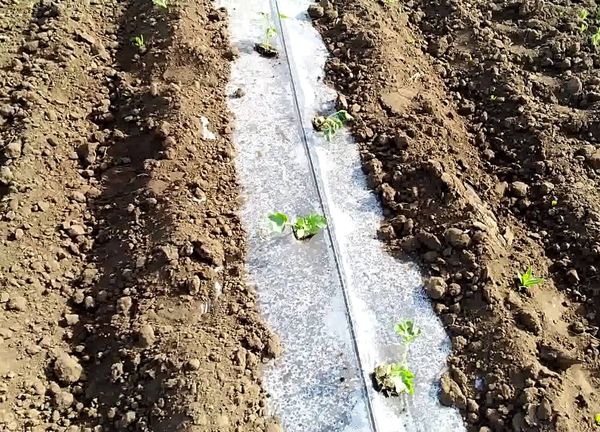
Features of growing melons
To ensure free access of oxygen to the roots, the soil must be constantly loosen to a depth of 10 cm. With the development of side loops culture spud. In order for the plant not to spend all the forces on the set of mass in the period of growth, you need to pinch the main stem. For the full development of melon three shoots are enough.
When the fruit ovaries appear, 2-6 of the strongest and largest specimens are left on the bush. To reduce the load on the whip the fruit is recommended to be tied into grids and hang on a pedestal. Fruits are placed on foil linings to prevent rotting.
When gourds begin to sing, it is recommended to reduce watering to the very minimum. Thereby, it is possible to increase the concentration of sugars in the ripening fruits. To clean the fruit you need is already well matured.
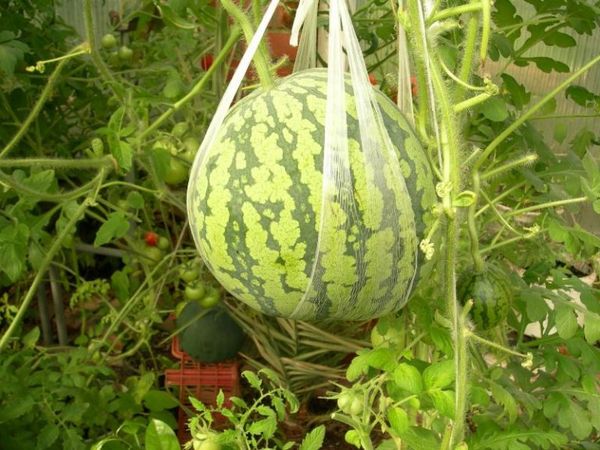
If watermelons will be further used for storage and transportation, it is better to take the berry not fully ripe.
The advantages of landing in open ground:
- in warm weather can be achieved maximum ripeness fruits;
- daily watering culture is not required;
- You can increase the yield while respecting the basic rules for the selection of soil and planting seeds for seedlings.
Grow watermelons and melons in the dacha is quite real. Some even grow them in bags or greenhouses. If you follow all the recommendations, then by the end of the summer you can enjoy the sweet, sugar fruits. The main advantage of growing melons in your garden is the absence of chemicals.
